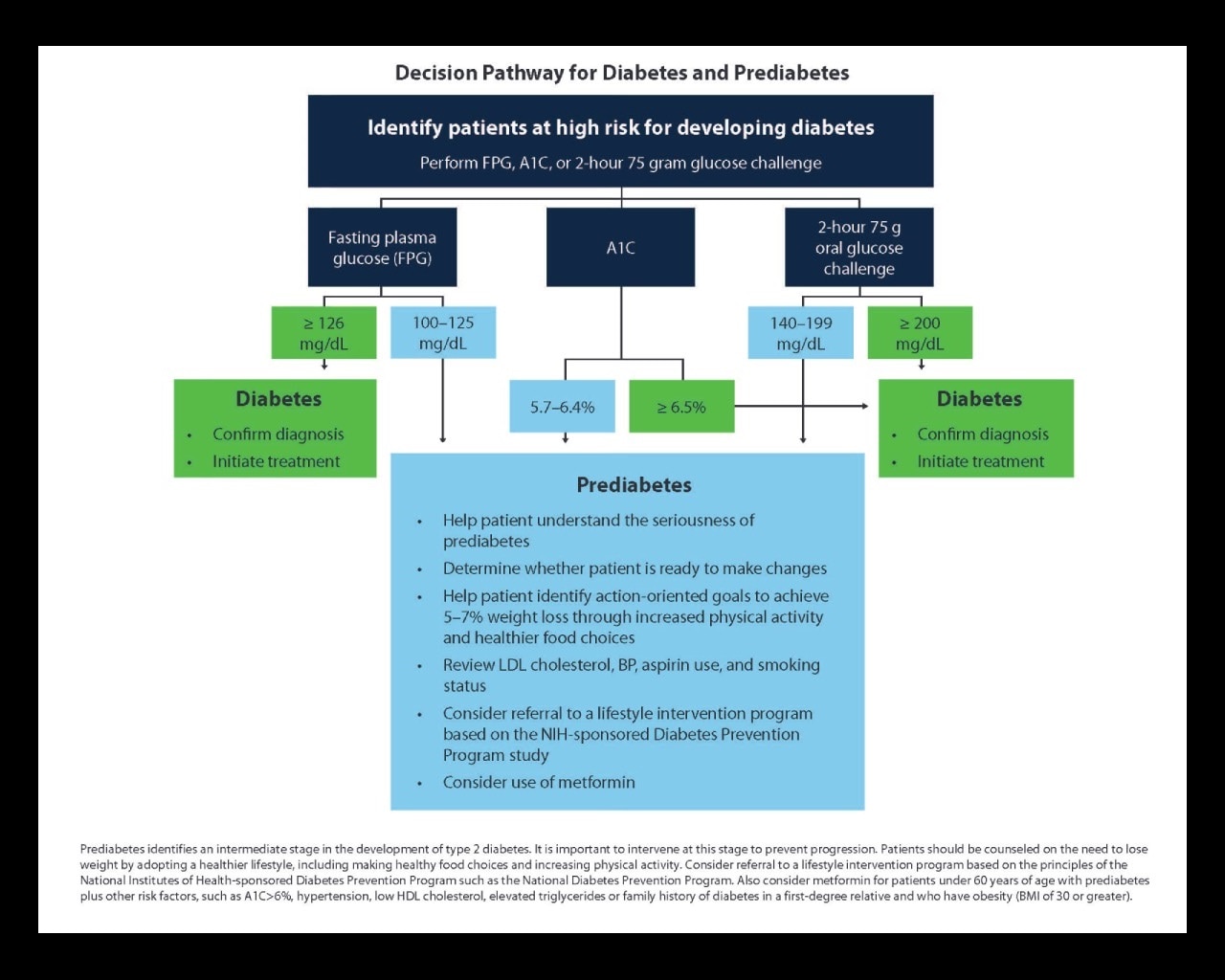Recommended Tests for Identifying Prediabetes
There are three recommended blood testing methods to identify or diagnose prediabetes: A1C, fasting plasma glucose, and 2-hour post 75 g oral glucose challenge. These are the same tests currently recommended to identify undiagnosed type 2 diabetes. The A1C test offers advantages for patients and providers because it removes the burden of fasting and/or lengthy lab visits.
Any of the following results will confirm a diagnosis of prediabetes:
- A1C 5.7%–6.4% or
- Fasting plasma glucose 100–125 mg/dL (impaired fasting glucose) or
- 2-hour post 75 g oral glucose challenge 140–199 mg/dL (impaired glucose tolerance)
Although the future development of type 2 diabetes is possible when blood test results are below these ranges, the risk for progression becomes higher for individuals with these more elevated test results.
Important Note: These different test options do not always identify the same patients. For example, some individuals may yield a normal fasting glucose test but a simultaneous A1C test in the prediabetes range. If the suspicion for prediabetes is high but the initial screening test is normal, it is reasonable to consider repeat testing in a shorter period of time (e.g., 1 year) or confirming the “normal” result with one of the other two screening test options.
Regardless of screening method, identifying individuals before the transition to type 2 diabetes allows action, such as providing information and resources for prevention or performing more frequent retesting (e.g., every 1 to 3 years). 1 The Decision Pathway for Diabetes and Prediabetes can guide the interpretation of lab results.

Prediabetes identifies an intermediate stage in the development of type 2 diabetes. It is important to intervene at this stage to prevent progression. Patients should be counseled on the need to lose weight by adopting a healthier lifestyle, including making healthy food choices and increasing physical activity. Consider referral to a lifestyle intervention program based on the principles of the National Institutes of Health-sponsored Diabetes Prevention Program such as the National Diabetes Prevention Program. Also consider metformin for patients under 60 years of age with prediabetes plus other risk factors, such as A1C>6%, hypertension, low HDL cholesterol, elevated triglycerides or family history of diabetes in a first-degree relative and who have obesity (BMI of 30 or greater).

